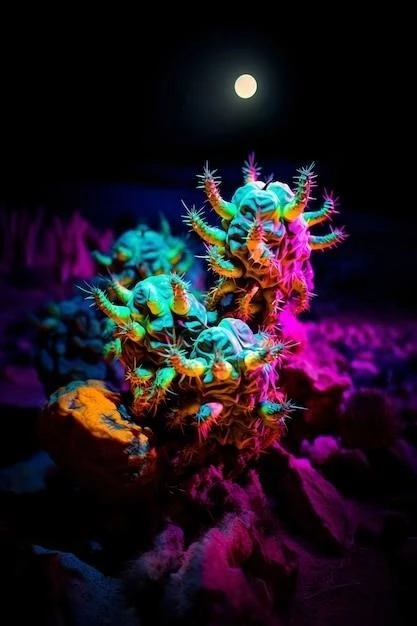The deep sea, a realm of perpetual darkness, is a realm of wonder and mystery. It is a world where sunlight never reaches, and where life has adapted to survive in an environment of extreme pressure, cold temperatures, and scarcity of food. One of the most remarkable adaptations of deep-sea creatures is their ability to produce their own light, a phenomenon known as bioluminescence.

The Science of Bioluminescence
Bioluminescence is the production and emission of light by living organisms. It is a chemical process that involves a reaction between a light-emitting molecule called luciferin and an enzyme called luciferase. When luciferin reacts with oxygen in the presence of luciferase, it produces energy in the form of light. The color of the light emitted varies depending on the specific luciferin and luciferase involved.
The Importance of Bioluminescence in the Deep Sea
Bioluminescence plays a crucial role in the survival of deep-sea organisms. It serves a variety of purposes, including:
- Predator-Prey Interactions: Bioluminescence is used by predators to attract prey, and by prey to confuse or deter predators. Some deep-sea fish, such as anglerfish, have lure-like appendages that emit light to attract unsuspecting prey. Other organisms, such as squid, use bioluminescent ink to confuse predators and escape.
- Communication: Bioluminescence is used by some deep-sea creatures for communication, such as attracting mates or signaling to other members of their species. Some squid and jellyfish use bioluminescent patterns to recognize each other.
- Camouflage: Some deep-sea organisms use bioluminescence to camouflage themselves against the dimly lit background. For example, some fish have photophores (light-producing organs) on their undersides that match the intensity and color of the light filtering down from the surface, making them less visible to predators below;
- Navigation: Bioluminescence can also be used for navigation. Some deep-sea organisms, such as the vampire squid, have bioluminescent organs that they use to illuminate their surroundings.
Examples of Bioluminescent Deep-Sea Creatures
The deep sea is home to a wide variety of bioluminescent creatures, including:
- Anglerfish: These fish have a lure-like appendage that emits light to attract prey.
- Squid: Some squid use bioluminescent ink to confuse predators or to communicate.
- Jellyfish: Some jellyfish have bioluminescent tentacles that they use to paralyze their prey.
- Shrimp: Some shrimp have bioluminescent organs on their bodies that they use for defense or communication.
- Copepods: These tiny crustaceans are a major food source for many deep-sea organisms and are often bioluminescent.

The Future of Deep-Sea Bioluminescence Research
Bioluminescence is a fascinating and complex phenomenon that is still being studied by scientists. Research into deep-sea bioluminescence is providing insights into the evolution of life in extreme environments and is leading to the discovery of new bioluminescent molecules and enzymes that have potential applications in fields such as medicine and biotechnology. For example, bioluminescent proteins are being used to develop new diagnostic tools and imaging techniques. The deep sea is a treasure trove of biodiversity and bioluminescence is just one of the many wonders that it holds.










